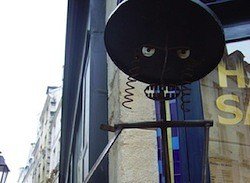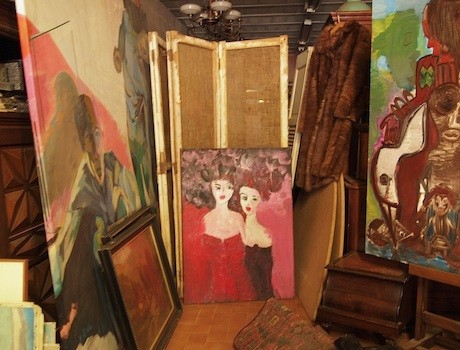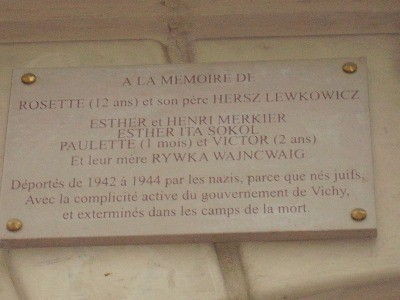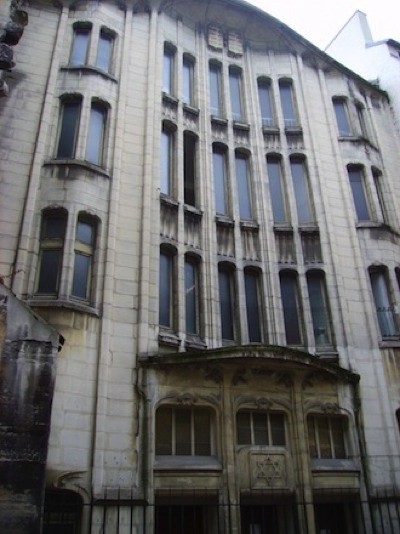Discovering Jewish Paris

Sat 5 Jun 2010

A modern sculpture of an Orthodox Jewish man on rue des Rosiers.
Think of the Marais, and hundreds of hip boutiques spring to mind, leaving you feeling like a little girl in a sweetshop, dizzy on sugar, unsure where to start. While that’s certainly one impression you might have of the neighborhood, there’s another, older facet to the area. Centered here is a strong Jewish community, with a rich and tragic history, that has recently been revived.
A medieval scholar of Jewish communities first called the area ha-ir hagedolah (Hebrew for “that great city”), in the 13th century, just before all Jews were expelled. They didn’t return until the 19th century, when they again settled in the Marais. Rue des Rosiers was and is the hub around the square known as the Pletzl (Yiddish for “little square”), where there are now many Orthodox bookshops and Jewish bakeries.

A Holocaust memorial plaque on rue des Rosiers.
If you look above the doorway opposite the bakery with the sculpture while standing in the Pletzl, you will see one of the first signs of tragedy. The plaque is dedicated to two families that lived there, who were deported to the death camps between 1942 and 1944, including children aged 12, 2, and 1 month.
Walk farther along rue des Rosiers and turn to the right, along rue Pavée. At No. 10 stands an Art Nouveau–style Orthodox synagogue, Agudath Hakehilot. First built in 1914 by Hector Guimard (the architect of the Art Nouveau–style metro stations), it was blasted by the Nazis on Yom Kippur in 1940 and has since been rebuilt in the same style. You can visit the synagogue, but because it is Orthodox, large mixed groups are not considered appropriate.

The Agudath Hakehilot Orthodox synagogue.
Crossing the rue de Rivoli toward the Seine, you’ll find the Mémorial de la Shoah museum on rue Geoffroy l’Asnier, dedicated to the French Jewish victims of the Holocaust. The museum starts with the Wall of Names, which lists the name of each Jewish victim deported from France, in alphabetical order and by year of deportation. If the memorial were no more than that wall, it would still be a very strong statement. It leaves you feeling very cold. The permanent exhibition in the basement is extensive, and unrelenting, filled with personal stories. One thing that is really brought home by this museum is just how active a role the Vichy government played during the time of the deportations. The room dedicated to the “Jew files” compiled by the Nazis and Vichy policemen on each French Jewish family and individual is one example. Seeing the names in faded ink made my stomach turn over more than once.
Back in the Pletzl, the atmosphere is now vibrant, and the cafés are buzzing, especially around l’As du Fallafel. A contemporary Israeli restaurant with a young clientele, it serves the best falafel you’ll find outside the Mediterranean.
INFO
Agudath Hakehilot
10, rue Pavée, in the 4th.